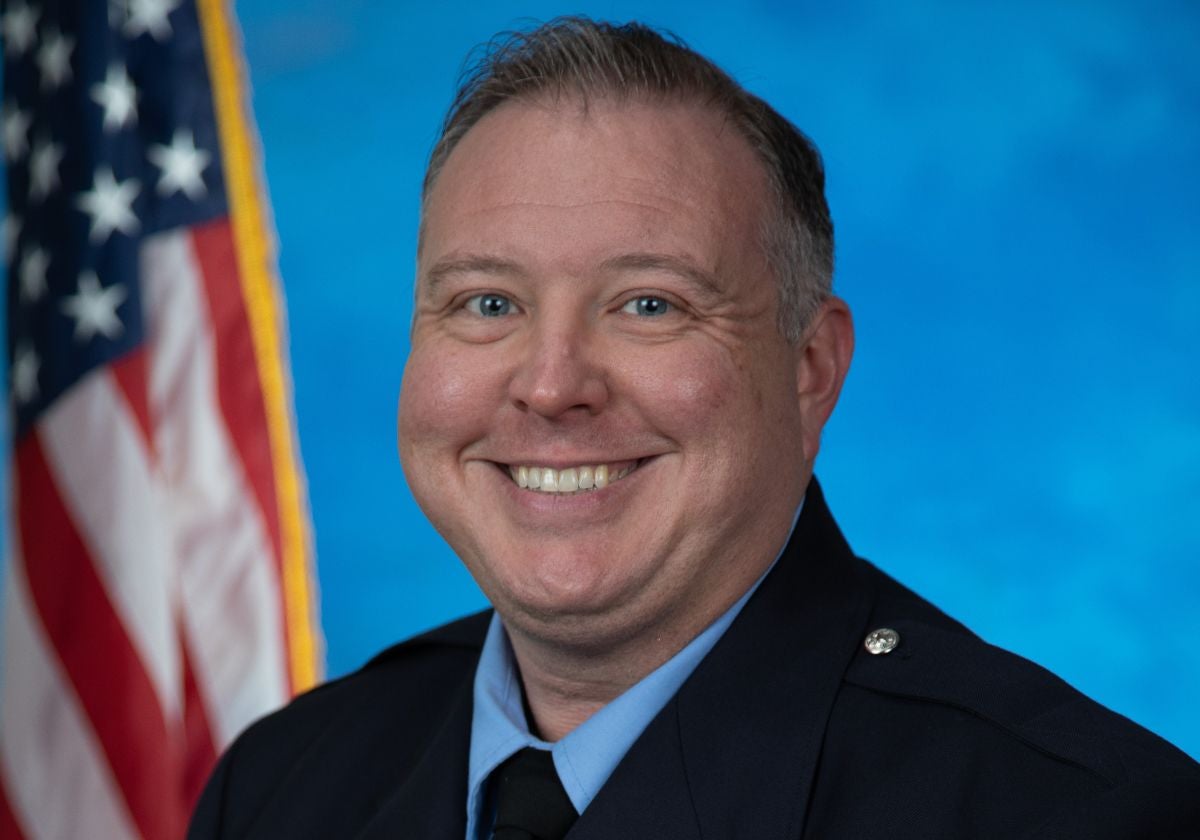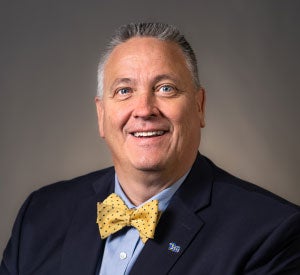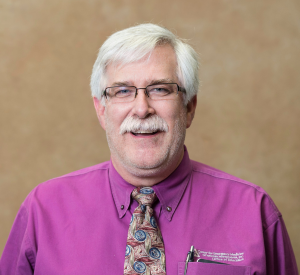In May, Michael Reed was promoted to battalion chief for the City of Schertz Emergency Medical Services (EMS) where he works in Schertz, Texas, a leadership opportunity that he credits the Pitt Emergency Medicine program for helping him obtain. Reed graduated from the Emergency Medicine program in 2011, and over 10 years later, he is still witnessing the impact of the degree on his career.
“My time in the Emergency Medicine program helped in the process of becoming a battalion chief because I have a bachelor’s degree. Though it wasn’t required for the position, it helped give me that little extra edge over some other people that didn’t have a degree.”
Michael Reed
Earlier in his career, Reed considered criminal justice, nursing or becoming a police officer, but chose instead to pursue emergency medicine. He obtained his associate’s degree in EMS from San Antonio College in 2004 and earned his paramedic certification within the state of Texas. After working in the field as a medic for a few years, he decided to get a bachelor’s degree, becoming the first in his immediate family to do so. As of 2025 Reed has maintained his NREMT (National Registry of Emergency Medical Technicians) paramedic certification for 20 years.

Transfer Experience
One of the entry points for the Pitt Emergency Medicine program is the Degree Completion program, intended for certified paramedics who enter the program as senior transfer students and can then complete a bachelor’s degree in two terms. The flexibility of the entry point was what drew Reed to the program.
“When I was applying for colleges, I was planning to go to the University of Texas Health Science Center here in San Antonio,” Reed said. “But Texas had this rule where they would only take 45 transfer credits. And I didn’t really want to retake classes I had already taken or pay a bunch of extra money to get credit for classes that I already took. I found Pitt and started talking to them, and they took more of my credits. So I only had to do my senior year, which was really nice.”
When applying for the program, Reed noted that the process of entering as a senior transfer student was simple and positive.
“I didn’t have any difficulties,” Reed said. “Any questions I had, everybody answered them quickly and made sure I knew everything that was going on. I never felt like I was pushed to the side or anything like that, whereas looking at some other colleges, they were not always helpful, and I felt like I was a bother.”
Translating Program Experience into Leadership Opportunities

The Emergency Medicine Degree Completion program can be completed online or on-campus. Reed chose to complete the program online, taking courses in an asynchronous format, and he completed his capstone project in person.
“I was not sure how taking classes online was going to go because I had never done anything like that before, but once I found my groove and formed a routine, it was a positive experience,” Reed said. “Likewise, I still felt connected to the other students in the program through interactive elements like message boards, which was nice for when I came on-campus for my capstone project, I didn’t feel like an outsider.”
Reed said the program’s curriculum offered a holistic perspective into emergency medicine, preparing students for leadership roles and promotions like his own.

“There was a lot of coursework that provided us with leadership skills,” Reed said. “We looked at things from an insurance perspective, such as costs and Medicare and planning the future of the EMS agenda. We also talked about unit hour utilization, which, when you’re in a management position, you have to consider if you are using your ambulances effectively and equalizing the load on all the units, so that has come in handy in my work in the field.”
After his recent promotion, he recognized how these skills were still being put into practice in his everyday life.
“It was helpful to learn how to run your ambulances and how to interact with crews. We learned how to keep important decisions in mind, not just from the crew side, but the big picture of why we’re doing it and why we’re telling them to do things. This really helped, not just in managing operations, but also personally because there were things I didn’t think about or angles I didn’t consider as a field person because I never had to think from that perspective. It was beneficial to learn more of the big picture to make sense of the decisions we make.”
Takeaways from the Program

A highlight during Reed’s time in the program was his interactions with the faculty. Namely, Walt Stoy, who is now an emeritus faculty member, and Thomas Platt, chair for the Department of Community Health Services and Rehabilitation Science and professor of the Emergency Medicine program.
“When I attended the program, Dr. Walt Stoy was a very important guy in EMS and had a foot in a lot of things,” Reed said. “It was really nice to have that level of involvement in EMS in a program that I attended. I learned a lot from Dr. Stoy and Dr. Platt.”
For other EMS folks Reed comes across who are interested in acquiring a bachelor’s degree, he finds himself routinely recommending the Pitt EM program.
“I’ve recommended Pitt’s Emergency Medicine program many times to many people. Sometimes I feel like they wish they hadn’t asked me because I’ll ramble on about it. It is the program I promote the most.”
Michael Reed
Looking ahead to the future, Reed aspires to become an assistant chief. In the meantime, he is aiming to pursue an online master’s program and has even considered other online programs at SHRS such as health informatics.
While Reed has already garnered several professional successes, he continues to commit to making an impact in the emergency medicine field, something that was ingrained in him while he was a student at SHRS.
“Throughout the program, I learned about the responsibility to push to better yourself and try to leave the profession better than how you found it,” Reed said. “And striving not only to improve yourself, but to help others and the industry be better.”


